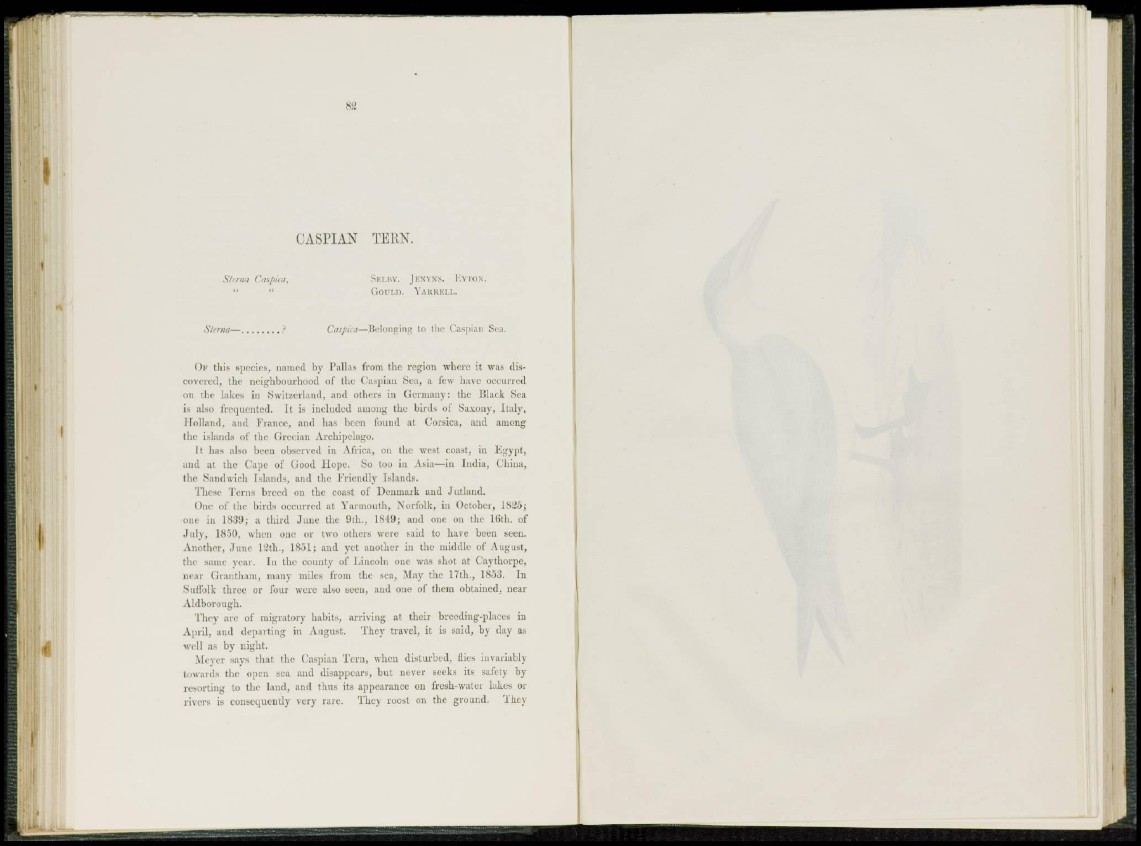
C A S P I A N T E R N.
S/t nut Cuspid, Se L B Y . J K N Y N S . EYTON.
" " Go u l d . Y a r r e l l.
Sterna— ? Caspiai—Belonging to the Caspian Sea.
O f this species, named by Pallas from the region where it was discovered,
the neighbourhood of the Caspian Sea, a few have occurred
on the lakes in Switzerland, and others in Germany: the Black Sea
is also frequented. It is included among the birds of Saxony, Italy,
Holland, and France, and has been found at Corsica, and among
the islands of the Grecian Archipelago.
I t has also been observed in Africa, on the west coa3t, in Egypt,
and at the ('ape of Good Hope. So too in Asia—in India, China,
the Sandwich Islands, and the Friendly Islands.
These Terns breed on the coast of Denmark and Jutland.
One of the birds occurred at Yarmouth, Norfolk, in October, 1825;
one in 1839; a third June the 9th., 1849; and one on the 16th. of
J u l y , 1850, when one or two others were said to have been seen.
Another, June 12th., 1851; and yet another in the middle of August,
the same year. In the county of Lincoln one was shot at Caythorpe,
near Grantham, many miles from the sea, May the 17th., 1853. In
Suffolk three or four were also seen, and one of them obtained, near
Aldborough.
They are of migratory habits, arriving at their breeding-places in
April, and departing in August. They travel, it is said, by day as
well as by night.
Meyer says that the Caspian Tern, when disturbed, flies invariably
towards the open sea and disappears, but never seeks its safety by
resorting to the land, and thus its appearance on fresh-water lakes or
rivers is consequently very rare. They roost on the ground. They